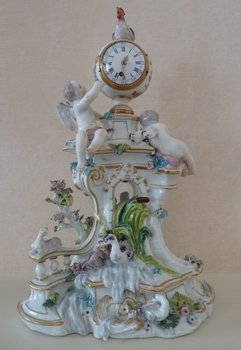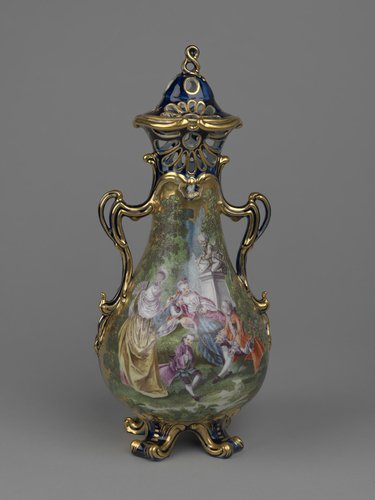made in chelsea pt.2: World Class Porcelain
Mecklenburg Service, depicting wild birds and dashing peacocks.
A most German item: a beer tankard, made in Dresden 1725
Very frivolous
Porcelain imported from China became the rave in the late 17th century. The last Stuart monarch Queen Anne was a great collector and spent vast sums on exquisite imports from the East. In the 1710s potters in Dresden (Germany), had discovered a formula to create china style porcelain, which was closely guarded. For a brief period the Saxons, held the monopoly on the finest European manufactured porcelain, but this was not to last.
Here in London a Belgian, Nicholas Sprimont is believed to have setup business with his partner Sir Everard Fawkener, Secretary to the Duke Curmberland. The location was just a stone's throw away, from the prestigious Ranelagh Gardens. The Chelsea Porcelain Works was established around 1743–45. A joint blue plaque with picaresque novelist Tobias Smollett, records the site of the factory on Lawrence Street.
The photographs on show are fine examples of Chelsea porcelain, owned by the Royal Collection, which can be seen in Windsor Castle. The Mecklenburg Service was created in 1763, a gift from Queen Charlotte, wife of George III, to her brother Adolphus Frederick IV, Duke of Mecklenburg-Strelitz. The Royal Collection owns 137 pieces of the original pieces. According to Horace Walpole, novelist and social commentator, the set was worth £1,200. An inflation calculator puts this at £253,305 in today’s money. It is telling that these very English luxury goods, where sent to a German prince.
This type of porcelain is made with bone-ash, a soft paste made from the calcination of animal bones. The mantel clock below is made in enamel, glass and porcelain. It shows two putti flanking the clock, one awake, the other asleep. These surmount an architecture arched structure, decorated with birds and flowers. It doesn't get any more Rococo.
Despite its beauty it seems an impractical object.
This style, also known as Late Baroque, or as I like referring to Baroque on Steroids, was popular in the early Georgian period. Rococo is overtly ornamental, with many curves and shapes inspired by nature. These are taken to the extreme of frivolity and exuberance.
My favourite piece I’m writing about is the vase, which is very French in design. It is pear shaped, with a bell-like lid with looped finials. Its contours are gilt and the body was hand painted with figures seated in a garden. I find the shape peculiar, but the contrast of colours is superb.
There are distinctive periods of the Chelsea factories output and these can be recognised by inconspicuous marks such as and anchor in blue and brown or a crown with a trident. Interestingly the proximity to the Chelsea Physics Garden was convenient and their botanical books and live specimen were readily at hand, for floral and plant decorations in their table ware. The objects mentioned here, are of course high end luxury items, but the company would have provided table ware more affordable for the middle classes.
The Chelsea Porcelain Works merged with the Derby Porcelain in the 1770s and production was eventually moved up north. This was not the end of the manufacture of ceramics in Chelsea, Josiah Wedgewood, set up a workshop for the decorating of pieces made in Staffordshire (Glebe Place, off King's Road). An interesting link, Wedgewood’s great-grand daughter Margaret lived on Cheyne Walk with her husband, the composer Ralph Vaughan Williams.
These examples are just a drop in an ocean. The range of designs and objects is breathtaking and I’d happily get carried away looking at more items. Hopefully it won’t spoil your next cup of tea in a plain 21st century mug.
Do you want to look up close to some Chelsea Porcelain. Why not book a private tour of Windsor Castle!





